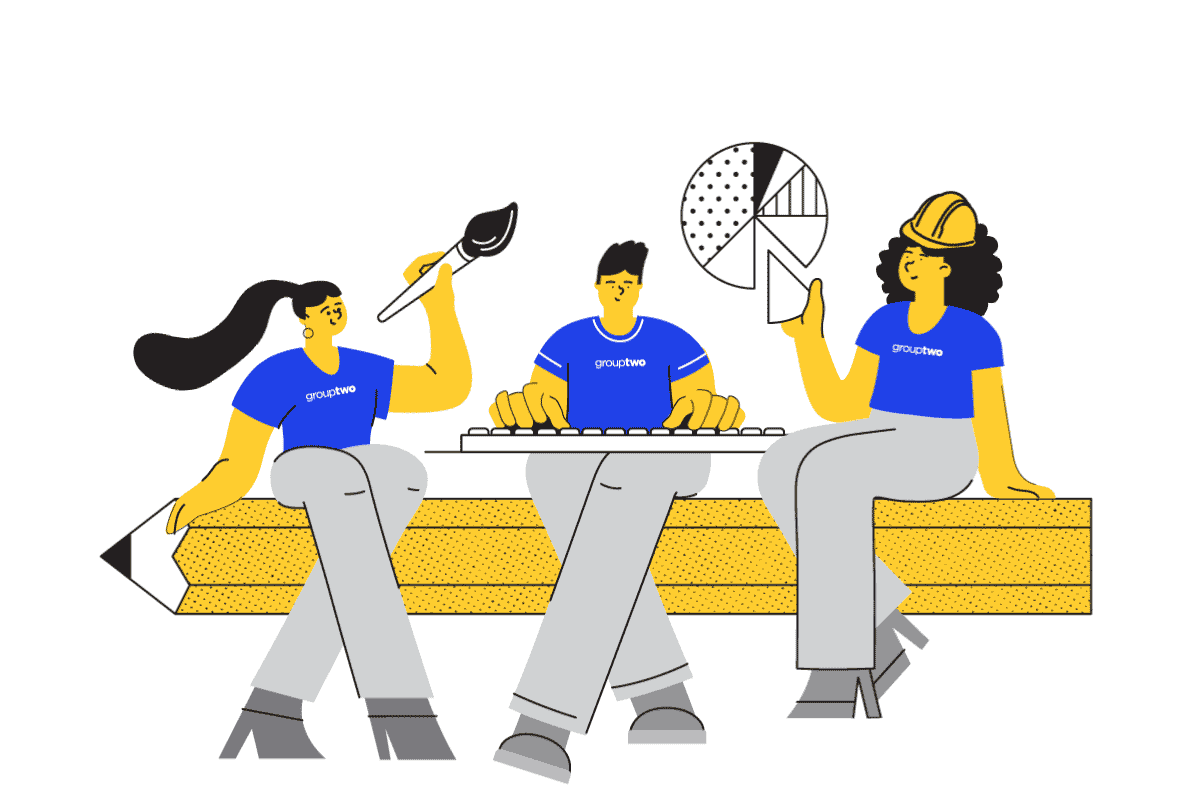You’ve heard the saying that your website is the equivalent of your online sales model. We would argue that it’s so much more. It is the front door to your business, the resource library for your customers, and the ultimate tool for getting found by new prospects. Your website is the first step in your customer’s journey, and we all know the importance of a good first impression.
With nearly 100% of all buyers starting the home search process online, and over half of all new home sales in 2020 originating as an online lead, your website needs to do a great job of meeting customers’ expectations and making the process easy.
Today, with record numbers of sales and teams finding it difficult to manage existing lead volume, your website may be the last thing you’re worried about. But if you think critically about it, there’s never been a better time to improve. If there’s any part of your site that’s not up-to-date or hasn’t been working properly, now is time to take it off the back burner and address it. When the market stabilizes and the rest of your competition is looking to refresh their sites, you’ll be well ahead of the curve.
Let’s look at eight signs it’s time for a new home builder website.
1) Slow Load Time
Think about the last time you came across a website that took too long to load. Did you sit there patiently waiting, looking forward to the experience? We’re guessing not. For the best user experience, Google recommends that websites load in under two seconds (Google itself aims for half a second). Why? Visitors read less with every second the website is delayed, and page speed influences your search rankings. According to SEMRush, half of all websites take longer than two seconds to load. Today’s online consumers are steeped in the e-commerce experience — they expect everything online to be fast, easy, and right on time.
2) Low Google Ranking
Is your website showing up on page one of organic Google search results? If not, your audience may be totally missing you. Google displays 10 results per SERP (search engine results page). The website in position #1 enjoys a 28.5% click-through-rate. Position #10, in contrast, gets only a 2.5% CTR. And page two results? Less than 1%. There are TONS of factors that go into Google ranking algorithms – like page speed, mobile-friendly design, site structure, age of website, keywords, content, user reviews, and at least 100 more. While it is a complex initiative, ranking on page one of Google will yield the most quality traffic and clicks to your website.
3) Not Optimized for Search Engines
One of the factors that impacts Google Ranking is Search Engine Optimization. SEO is the practice of improving your website to attract more, and better quality, traffic. It starts with site structure and crawl accessibility so that search engines can read and index your content, then moves up to quality content that is keyword optimized, meets user intent, and is easy to navigate. SEO should always be incorporated in the development stage of a website, rather than considered as an afterthought.
4) Not Mobile-Friendly
Approximately 63% of Google website visits are from a mobile device. Much of home builder advertising involves targeted social ads, which are most often displayed on mobile devices. Having a mobile-friendly website is critical to both a positive user experience and higher conversion rates. Mobile-friendly websites can be easily read on small devices without the need for pinching or zooming, the layout is clean and streamlined using a hamburger menu, and the content should mimic the desktop site. Google also prioritizes mobile site speed as a key factor in determining page ranking. Not only should your website be mobile-friendly, it should also be designed with a mobile FIRST strategy.
5) Difficult to Manage on the Backend
If you have an older website, managing content and updates on the backend can be a time-intensive, frustrating chore. As themes and child themes are customized and become legacy, they may not be compatible with the most recent CMS (customer management system) updates. This can result in poor website performance and on-page errors.
Additionally, there should be an easy, streamlined process for updating listings, communities, and site plans (without the need for a developer) so that your customers have access to the latest information. Having a website with an easy-to-use backend can save marketers hours of time, resources, and frustration when it comes to website maintenance.
6) URL Structure is… Unstructured
Clean, simple URLs that are well organized and SEO-friendly will increase the efficacy of your digital advertising campaigns. Marketers need to be able to drive users to pages that are deeper into the site structure and most relevant to the search. This includes organizing URLs (and site folders) by market, community, and inventory homes – and sometimes using a combination of URL parameters that provide a filter for the web content that is most relevant.
7) No or Limited Integrations
Website integrations with third-party platforms can make a marketer’s job a dream. This 2-way flow of information eliminates duplicate data entry and human error, and creates a data ecosystem that results in better reporting for more strategic decision-making. If your website doesn’t “talk” to other platforms like your CRM system, Zillow, BDX, Google Maps, social platforms, and even the local MLS, you’re missing an opportunity (or more likely — several).
8) Your Website is Older Than a Toddler
Technology moves fast, and customer expectations do too. A good rule of thumb is that if your website is older than three years, it’s probably time for a new one. A dated website won’t be able to support advances in web development and best practices like the ones listed above. That means your website won’t be found as easily by search engines or buyers looking for new homes in your area.
Building a new website can seem like a daunting commitment. It requires inter-disciplinary expertise to create a quality, high-ranking website. Most importantly, you need a site that lives up to consumer expectations. The online experience has been user-focused with e-commerce sites like Amazon and Zappos raising the bar for years. While you may not need a shopping cart and next-day delivery (yet), homebuyers need to be able to find what they’re looking for and fall in love with your homes in the process.
At Group Two, we are committed to delivering well-designed, high-performance websites that fit who you are as a builder and engage home buyers within a user-friendly environment. Your team will have more (and better) data to analyze so that you can make smarter marketing decisions. Through a carefully planned project timeline and efficient process, we avoid the pain points of website redesign and even have a little fun while doing it!
If you want to learn more about Group Two’s home builder website development service, please contact us today — we’d love to chat!

